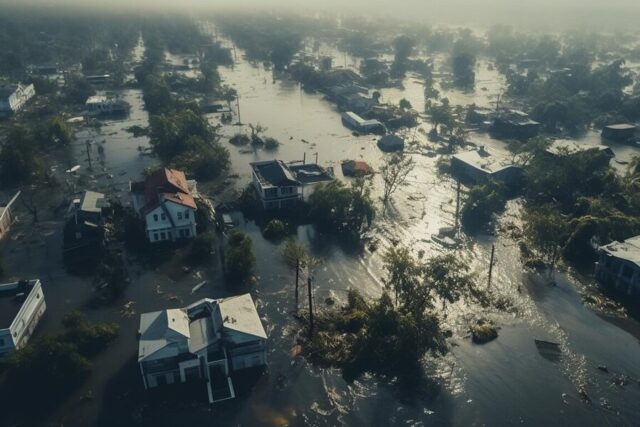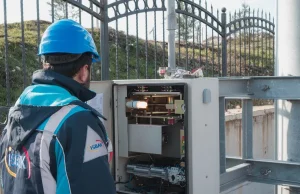Texas, the Lone Star State, boasts vast landscapes and diverse climates—from humid coastlines to arid deserts. But this expansive geography also comes with a cost: the state is a hotspot for a wide variety of natural disasters. If you’ve ever wondered what natural disasters occur in Texas, you’re not alone. Texans experience everything from hurricanes to wildfires, tornadoes to floods—and even earthquakes.
Understanding what natural disasters occur in Texas is essential for residents, newcomers, travellers, and business owners. Whether you’re building a home, choosing a city to live in, or preparing an emergency kit, knowing which natural threats are most likely to strike can make all the difference.
This comprehensive guide covers not just what natural disasters occur in Texas but also when they typically happen, why the state is so vulnerable, how to prepare, and what recovery looks like. By the end of this blog, you’ll have a full breakdown that will help you prepare better, react faster, and recover smarter.
What natural disasters occur in Texas?
Texas experiences hurricanes, tornadoes, floods, wildfires, extreme drought, hailstorms, and occasional earthquakes. These natural disasters vary by region and season but can cause significant damage if not prepared for in advance.
Why Texas Is So Prone to Natural Disasters
Texas is uniquely positioned as one of the most disaster-prone states in the U.S., largely due to its vast size and diverse geography. Stretching across multiple climate zones, the state ranges from the humid subtropical conditions of the east to the arid deserts of the west. This dramatic variation creates the perfect storm—literally—for a wide range of natural disasters.
In southeastern Texas, the warm waters of the Gulf of Mexico intensify tropical storms and hurricanes, bringing powerful winds and torrential rain. Meanwhile, the flat landscapes of north and central Texas lie within “Tornado Alley,” making the region highly susceptible to destructive tornadoes. Out west, near the Panhandle, prolonged droughts and dry conditions make wildfires a constant threat.
Urban development also plays a role. Rapid expansion in flood-prone areas like Houston has worsened flood risks due to concrete sprawl and poor drainage systems. Population growth and outdated infrastructure further amplify disaster impacts.
Texas experiences one of the highest rates of severe weather alerts in the country, especially during spring and summer. Combine this with shifting climate patterns and fault lines in West Texas, and it’s clear that year-round disaster preparedness isn’t just smart—it’s necessary for survival.
When Do Natural Disasters Typically Strike in Texas?
Natural disasters in Texas don’t follow a single pattern—they occur throughout the year, with each season bringing its own set of risks. Thanks to the state’s massive size and climate diversity, different regions experience different threats at different times.
Spring: Storms and Tornadoes
From March through June, central and northern Texas become especially vulnerable to severe storms and tornadoes. This is peak tornado season in what’s known as “Tornado Alley,” where warm, moist air from the Gulf clashes with dry, cool air from the north. The result is frequent tornado outbreaks, often accompanied by large hail, heavy rain, lightning, and damaging winds. These violent spring storms can cause widespread property damage and put lives at risk.
Summer: Hurricanes, Wildfires, and Droughts
Summer marks the beginning of hurricane season along the Texas Gulf Coast, which runs from June to November. Cities like Houston, Galveston, and Corpus Christi are most at risk. Hurricanes can bring intense winds, storm surges, and catastrophic flooding, as seen with Hurricane Harvey in 2017. At the same time, western and central Texas grapple with dry conditions that can spark wildfires. Hot temperatures, low humidity, and dry vegetation create perfect conditions for fast-moving, destructive fires. Extended periods of heat also lead to severe droughts, impacting agriculture and water supply.
Fall: Flash Flooding
As temperatures cool, early fall rains can lead to flash flooding, especially in urban centres like Austin and Houston. Concrete-heavy development and poor drainage systems contribute to rapid runoff and rising water levels.
Winter: Ice Storms and Deep Freezes
Although rare, winter in Texas can bring sudden cold snaps and ice storms, particularly in the northern parts of the state. The infamous winter freeze of 2021 led to statewide power outages and significant infrastructure failure, showing that even cold weather poses a serious threat.
Natural Disasters That Occur in Texas—Broken Down by Type
Texas is highly vulnerable to a wide range of natural disasters due to its vast geography and diverse climate zones. Here’s a breakdown of the major types of natural threats that affect the state:
- Hurricanes: These powerful storms form in the Gulf of Mexico and the Atlantic Ocean, bringing intense winds, heavy rainfall, and storm surges. Coastal cities like Houston, Corpus Christi, and Galveston are most frequently impacted during hurricane season, which runs from June through November.
- Tornadoes: Central and northern Texas lie within the infamous “Tornado Alley.” Tornadoes are especially common in spring and early summer, with wind speeds that can exceed 200 mph, causing catastrophic damage across large areas.
- Floods: Flash floods and river overflows are regular threats, particularly in heavily urbanized regions like Houston. The combination of low elevation, heavy rains, and inadequate drainage makes flooding a frequent and damaging event.
- Wildfires: West Texas and the Panhandle are hotspots for wildfires, especially during late summer and early fall. Dry weather, high temperatures, and lightning strikes contribute to fast-spreading fires that endanger homes and ecosystems.
- Hailstorms: Hail is a common occurrence in north-central Texas, including the Dallas- Fort Worth area. These storms can severely damage cars, rooftops, and crops in just minutes.
- Droughts: Prolonged dry periods, especially in western Texas, lead to water shortages, agricultural losses, and increased wildfire risk.
- Earthquakes: Though not historically common, small earthquakes are increasing, particularly in West Texas, due to fracking and oil exploration activities.
The Impact of Natural Disasters on Texas Communities
Natural disasters in Texas go far beyond physical destruction—they deeply affect families, communities, and the economy. Events like hurricanes, tornadoes, floods, and wildfires leave long-lasting scars that take years to heal. Hurricane Harvey alone displaced tens of thousands of residents, flooded over 100,000 homes, and caused billions of dollars in damages. In rural areas, tornadoes have flattened entire neighbourhoods in mere minutes, creating widespread homelessness and hardship.
Flooding is particularly problematic in cities like Houston and Austin, where repeated events have led to costly property damage, skyrocketing insurance premiums, and serious mental health issues. The emotional trauma of losing a home or business can linger well after the water recedes.
Wildfires in regions like the Panhandle and Hill Country destroy ranches, natural habitats, and homes, often leaving communities waiting months for state or federal recovery assistance. Economically, natural disasters cost Texas billions each year, hitting sectors like agriculture, energy, and infrastructure. That’s why understanding what natural disasters occur in Texas is not only vital for survival but for long-term financial and social resilience.
How to Prepare for Natural Disasters in Texas
Preparing for natural disasters in Texas is essential, especially given the state’s exposure to hurricanes, tornadoes, wildfires, floods, and more. A proactive approach can help minimize damage and protect your family when the unexpected occurs. Here’s how to get started.
- Create a Family Emergency Plan: Begin by establishing a disaster plan tailored to your household’s needs. Decide on meeting points in case of evacuation, designate emergency contacts, and discuss what each family member should do during specific disasters. It’s important to store printed copies of identification, insurance documents, and medical records in a waterproof, easy-to-access folder.
- Stay Informed Year-Round: Staying informed is one of the most effective ways to stay safe. Enrol in local emergency notification systems and download reliable weather apps that provide real-time alerts. Social media channels run by your city or county emergency departments can also offer timely updates during weather events.
- Build a Disaster Supply Kit: Every Texas household should have a disaster supply kit that can sustain family members for at least 72 hours. This kit should include clean drinking water, shelf-stable food, essential medications, flashlights, batteries, and hygiene supplies. Don’t forget blankets, extra clothing, and any special items for children or elderly family members.
- Secure Your Home: Take preventive measures by installing storm shutters, securing heavy furniture, and elevating electronics or utilities above flood-prone levels. In wildfire-risk areas, clear vegetation around the home and use fire-resistant building materials where possible.
- Review Your Insurance Coverage: Check that your homeowner’s or renter’s insurance includes coverage for natural disasters common in Texas. Flood insurance, in particular, is crucial—even in areas not officially labeled as flood zones—because flood damage is not typically covered by standard policies.
Final Thoughts
Texas is a powerhouse of nature, but with that beauty comes risk. By understanding what natural disasters occur in Texas, we equip ourselves to face them head-on. Whether it’s through better planning, stronger infrastructure, or smarter response systems, Texans can and do overcome these challenges.
The Lone Star State may be tested by floods, fires, and furious winds, but knowledge, action, and community spirit are the keys to resilience. Stay alert, stay prepared, and stay safe.
FAQ’s
Q. What is the most common natural disaster in Texas?
A. Flooding is the most frequent and widespread natural disaster in Texas, particularly in low-lying and urban areas like Houston, where poor drainage and heavy rainfall combine to cause recurring issues.
Q. Which parts of Texas are most prone to tornadoes?
A. North and central Texas—especially the Dallas-Fort Worth area—are situated in “Tornado Alley,” where warm, moist Gulf air and cold northern fronts frequently collide to trigger tornado activity.
Q. When is hurricane season in Texas?
A. Hurricane season in Texas spans from June 1 through November 30, with the highest storm activity typically occurring between late August and September, especially along the Gulf Coast.
Q. Do earthquakes happen often in Texas?
A. While historically rare, earthquakes have become more frequent in recent years, especially in West Texas and near the Oklahoma border, largely due to oil and gas extraction practices like fracking.
Q. How can I prepare for a disaster in Texas?
A. Start by building an emergency kit, reviewing evacuation routes, securing important documents, ensuring proper insurance coverage, and signing up for local emergency and weather alerts.














